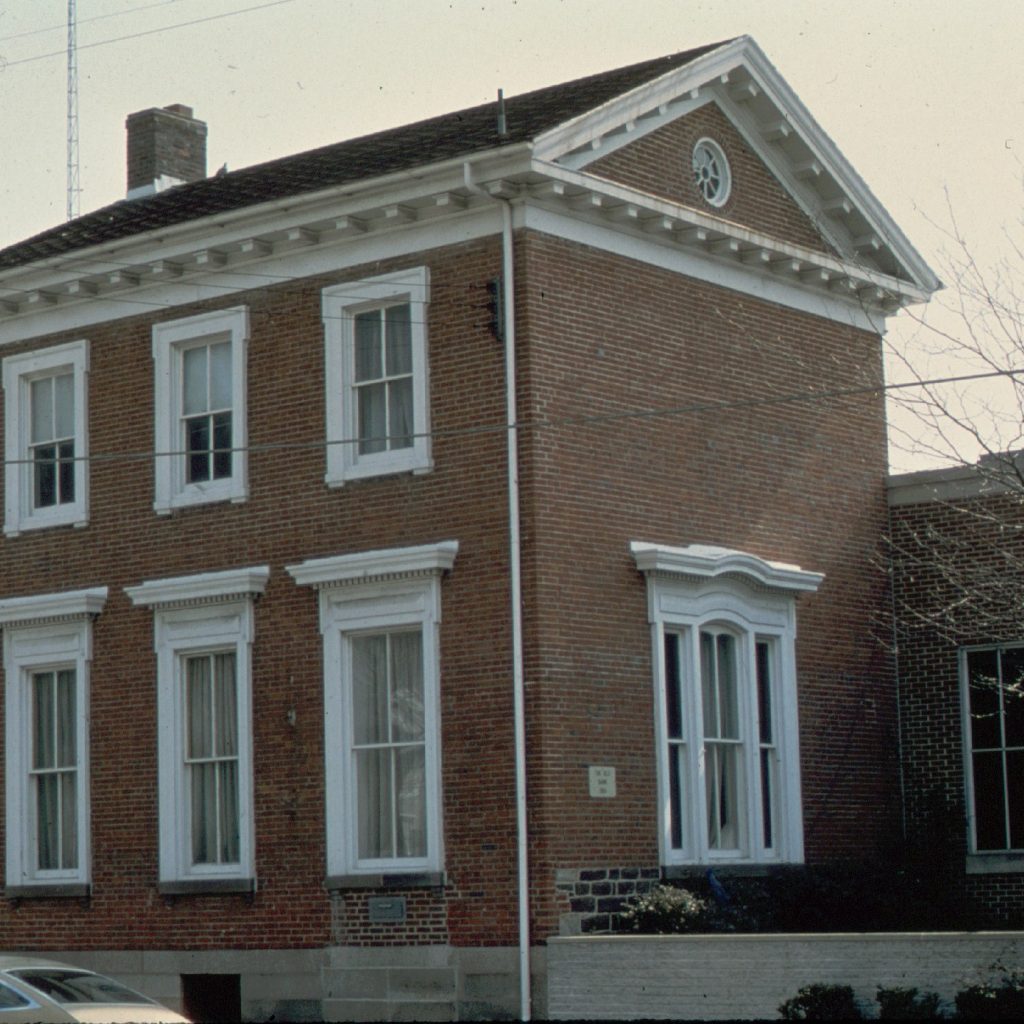Municipality: Bridgeton
Category: Bank
The year was 1815, and Bridgetown (now Bridgeton) was booming having recently been named the seat of government for Cumberland County. The town has developed largely on the west side of the Cohansey River, and in 1815 the affluent Reeves brothers erected a cut nail factory, the first major industry in the town. At the time, the only banks south of Trenton were the Farmers Bank in Mount Holly and the National State Bank of Camden. Several prominent citizens joined together to charter a bank in Bridgetown to provide services to the quickly growing community. The expanding economic activity in 1815, however, was dampened by an event on the other side of the world. In April of 1815, in Indonesia, Mount Tambora exploded in the most massive volcanic eruption in recorded history, four time as powerful as the eruption of Mount Krakatoa in 1883. Millions of tons of sulfur were released into the atmosphere, covering North America and Europe with a dry fog that dimmed the sunlight and caused widespread climatic changes, with summer temperatures fluctuating from 95 degrees F to 35 degrees F within hours, and lake and river ice reaching as far south as Pennsylvania in July and August. The year 1816 came to be known as the “year without a summer.” The ground in Bridgeton was still forzen in June, and what crops the farmers managed to plant soon failed. Livestock died and unemployment soared.
It was during this time of national crisis that a local entrepreneur, Jeremiah Buck, presented the fledgling bank’s directors with a proposal. Jeremiah presented a deal that is he received the building contract for the bank, he would have the building ready to open its doors in just sixty days or else he would forfeit all payment for material and labor. The bank directors took the deal.
Development in Bridgetown has occurred mainly on the west side of the river, and this was where the county courthouse, the Presbyterian church, the commercial buildings and the cut nail factory were all located. However, when the bank directors were presented with a donated piece of ground on the east side of the river, they grabbed it up.
Construction began in July 1816 and with a sixty-day window to complete the entire building, the pace of the carpenters and masons was frantic. Design details were worked out on the fly with only the simplest of direction from the bank directors. Jeremiah Buck had to include a “strong stone vault,” “proper sized” windows, two floors, and engrave “BANK” over the entrance. All other details were worked out during construction. By September 1816 the bank was complete and Jeremiah Buck had won his bet.
Cumberland Bank quickly grew, and developed a reputation for being a well-run, conservative institution. It made a particularly strong mark on Bridgetown when General James Giles, a local Revolutionary War hero and bank president, made a decision to drop the “w” from Bridgetown, changing the name to Bridgeton. He accomplished this by having “Bridgeton” printed on the bank notes.
In 1846, Cumberland Bank installed a “security system” with the addition of a ferocious watch dog and in 1856 made alterations to the building, including a redesigned roofline.
The National Bank Act of 1863 established a supervised national banking system and uniform national currency. One aspect of the act required banks to purchase U.S. government securities which helped the federal government finance the Civil War. The Cumberland Bank received a federal charter in 1865 under the act and became the Cumberland National Bank.
In 1886, the bank’s directors decided that the building was too small to handle their growing clientele, and authorized the construction of a new bank on the corners of Commerce and Laurel Streets in the heart of town. Cumberland National Bank thrived until the late 20th century when it was acquired by United Jersey Bank, which soon merged with Summit Bank, which itself merged with Fleet Bank. Fleet Bank was then purchased by Bank of America.
In 1901, the Ladies’ Auxiliary and a group known as the “Friends” combined their resources and purchased the Cumberland National Bank building for use as a library. In 1967 a large annex west of the bank building was constructed, which was used to house the majority of the library’s functions. The annex is today located on the exact site of the office of General Ebenezer Elmer, which was the repository of the first library collection in the city in 1811. The Cumberland Bank portion of the structure became the offices for the library administration.

